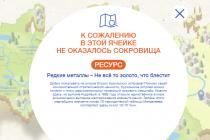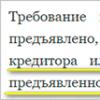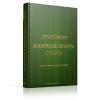And in terms of the number of inhabitants it far exceeds all other regions. There are 39 sovereign states on the political map of Asia. Many of them are among the oldest in the world. Foreign Asia is one of the centers of the origin of humanity, the birthplace of agriculture, artificial irrigation, cities, and many cultural values. The vast majority of countries in the region are developing. It is usually divided into four subregions: Central and East Asia, Southeast Asia, South Asia, and Southwest Asia. The countries of East and Southeast Asia are included in the Asia-Pacific region (APR).
Australia is also considered in this topic as a continental country included in the Asia-Pacific region.
1. Territory, borders, position: large differences between countries.
The territory of foreign Asia stretches from north to south for almost 7 thousand km, and from west to east for more than 10 thousand km. China and India are giant countries, most of the rest are fairly large countries. . But along with this, there are many small countries in Asia, and there are also microstates. . The borders of most countries follow well-defined natural boundaries. In some places, such as the Himalayas, this creates serious obstacles to economic and other ties.
The EGP of the countries of the region is characterized by three main features.
Firstly, this neighbor situation, which largely unites countries from each of the four subregions of Asia.
Secondly, this seaside location most countries, providing access to the seas Quiet, Indian and Atlantic oceans, where the world's most important trade routes pass.
Example. The territory of Vietnam is stretched along the coast of the South China Sea in a narrow strip stretching for 1,700 km. It is no coincidence that geographers figuratively call this country “the balcony of Indochina over the Pacific Ocean.” Vietnam's main connections with other countries are via sea routes.
Thirdly, this deep position some countries, which is generally much less profitable.
Example. Mongolia, located inland, is the largest landlocked country in the world. Its connections with other countries are carried out mainly through transport systems Russia and China.
Political map overseas Asia has undergone great changes recently. Before World War II, 90% of its population lived in colonies and semi-colonies. Now almost all countries in the region are politically independent states. Nevertheless, overseas Asia remains the scene of many territorial disputes, which from time to time lead to the escalation of regional and local conflicts, often accompanied by armed clashes and even long wars.
Such territorial disputes exist between Iran and Iraq, Iraq and Kuwait, India and Pakistan, India and China, China (PRC) and Taiwan, Russia and Japan over the Kuril Islands, Greece and Turkey over Cyprus, etc. Korea is divided by demarcation line to the Democratic People's Republic of Korea (DPRK) and the Republic of Korea. Despite the creation of the temporary Palestinian Authority, relations between it and the state of Israel are still far from being fully resolved, and the transition to an independent Palestinian state has been postponed more than once.
As in overseas Europe, in foreign Asia republics predominate, but there are also many countries with a monarchical form of government. . (Exercise 1.)
2. Natural conditions and resources: a region of contrasts.
In general, the region's mineral resources, which provide the basis for heavy industry, are very diverse. The main basins of coal, iron and manganese ores, and a number of non-metallic minerals are concentrated within the Chinese and Hindustan platforms. Within the Alpine-Himalayan and Pacific folded (ore) belts, ores of non-ferrous and rare metals predominate. But perhaps the main wealth of the region, which largely determines its role in the international geographical division of labor,- this is oil.
Example. Although oil and natural gas reserves have been explored in most countries of South-West Asia, the main deposits are located in Saudi Arabia, Kuwait, Iraq, Iran, and the United Arab Emirates. In addition to large reserves, they are distinguished by very favorable mining and geological production conditions. .
Intensified searches for oil and natural gas are being conducted on the shelf of the marginal seas of East and Southeast Asia - one of the largest and least studied in the world. (Task 2.)
The natural resource prerequisites for the development of agriculture in the region are also very diverse. However, for most countries there are two main problems.
Firstly, this is a problem of lack of land resources. The presence of large mountain ranges, desert and semi-desert spaces has a strong impact on the structure of the land fund, limiting the share of agricultural, and especially arable, land in it. As a result, the per capita availability of arable land in most countries of the region is only 0.1-0.2 hectares, or even less, and as the population grows, it decreases.
Secondly, uh then the problem is the rational use of agroclimatic resources. Heat reserves in most of the region ensure the vegetation of plants during the agricultural season or even all year round. But moisture resources are distributed extremely unevenly. If in areas of monsoon climate irrigation is used only in winter, then in the arid tropics and subtropics of South-West Asia it is necessary throughout the year. In general, in the region almost all water intake is used for irrigation. Almost 3/4 of the world's irrigated land is located here. By total area India ranks first in such lands in the world, China - second.
Irrigation in foreign Asia has been known for more than 4 thousand years. Iran still has irrigation systems built two millennia ago. In Syria (see Figure 62), Iraq, and Typia, large hydroelectric complexes were built, which made it possible to expand the area of irrigated land. And in the Persian Gulf countries, mainly expensive desalinated sea water is used for irrigation; usually it is brought to each tree, to each bed or flower bed.
In a significant part of the region, natural conditions (deserts, highlands) do not allow people to engage in agriculture and forestry at all. (Task 3.)
3. Population: size, reproduction, ethnic and religious composition, location, urbanization.
In terms of population, foreign Asia ranks uncompetitively first among all major regions of the world: its share in the world population reaches 60%. This is explained by Most countries in the region are still in the second stage of demographic transition a, i.e. at the stage population explosion, although in the 90s. he was clearly on the decline.
Similar demographic situation complicates many of the economic, social and environmental problems of overseas Asia. In addition, according to forecasts, by 2025 the region's population should increase to 4.6 billion people.
This general conclusion does not exclude the existence of significant differences between individual subregions. In East Asian countries, demographic policies have already led to a significant reduction in the birth rate and natural population growth. In Southeast Asia, the rate of such growth also began to gradually decrease. In South Asia, this decline is much slower. And South-West Asia remains at the epicenter of a population explosion, with some of its countries being among the “record-breaking countries”. This is largely due to the fact that the Arab countries of this subregion, professing Islam, do not pursue a demographic policy at all. .
The ethnic composition of the population of foreign Asia is extremely complex: ethnographers believe that more than 1 thousand peoples live here, belonging to a wide variety of language families and groups. (Task 4.) Among them there are very large and very small peoples scattered throughout the mountains. Most countries are multinational
Example. There are more than 150 peoples each in India and Indonesia, almost 100 in the Philippines, about 60 in China and Vietnam, and more than 30 in Iran, Afghanistan, Myanmar, and Thailand.
Foreign Asia is the birthplace of all three world religions, as well as many major national and regional religions, which for many centuries and even millennia have had an enormous influence on politics, economics, spiritual culture, population reproduction, and customs of peoples. Religion has also found wide application in material culture - Muslim mosques, Hindu temples, Buddhist pagodas and monasteries. And even today its influence on all aspects of people’s lives remains very great.
In Muslim countries, religion often strictly regulates the rights and responsibilities of men and women in society and family (separate education in schools and universities, separate work, different rooms in public places and private homes), affects marital relations (encouraging large families, allowing polygamy, wedding ceremonies), daily routine (daily five times prayer - namaz, Friday as a day off), diet (Muslim fast - Ramadan, holiday Eid al-Fitr, the ban on alcohol and pork), on clothing (wearing a woman's veil), on the legal system (Sharia court), the nature of external migration. . In most Muslim countries in Asia, Islam is declared the state religion; in Iran, Pakistan, Afghanistan this is reflected in the official names of the countries. 

The complexity of the ethnic and religious composition of a number of Asian countries leads to the emergence of many interethnic and religious conflicts. They are especially strong in India, Pakistan, Sri Lanka, Afghanistan, and the Philippines. Most of these conflicts have their roots in colonial and semi-colonial times, and they usually proceed under the slogans of separatism.
Example. The Kurds are a people numbering about 20 million people. But historically, they ended up as part of Turkey, Iran, Iraq and Syria. For a long time now, the leaders of the Kudr national movement have been seeking, including by armed means, the creation of an independent state of Kyrdistan.
The distribution of the population in the region is particularly uneven. Here at one pole there are very densely populated coastal plains, valleys and river deltas, at the other there are extremely sparsely populated deserts and semi-deserts, highlands, and tropical forests.
Example. Bangladesh ranks 87th among countries in the world in terms of area and 7th in terms of population. The average population density in this low-lying country has already reached 1000 people per 1 km 2. In some areas it is 2000 people per 1 km 2! And in Mongolia, one of the most sparsely populated countries in the world, which is almost three times larger in area than France, there are an average of 3 people per 2 km2.
International migrations have a certain influence on the distribution of the population in the region.
This applies to the greatest extent to the oil-producing countries of the Persian Gulf, which, as you already know, have become one of the world's main centers of attraction labor resources. The total number of immigrants from the countries of South and Southeast Asia, as well as North Africa, is more than 10 million
Human. Almost half of them find work in the largest of these countries - Saudi Arabia, about 1 million are employed in Kuwait. .
The main areas of activity of labor migrants are oil industry, construction, transport, services. In Saudi Arabia, migrant workers make up 60% of all employees, in Kuwait 60%, and in the UAE even 90%. .
But emigration from foreign Asian countries to other regions is also significant. These include Kurds who travel to Europe legally and illegally, and “brain drain”, for example from India and the Philippines.
But the main impact on population distribution is the process of urbanization, which took the form of an “urban explosion.” Despite the fact that, in terms of the share of urban population, the vast majority of countries in the region under consideration belong to the category of medium-urbanized ones, with a very large population, the absolute indicators are also very high.
Example. Of the 3.15 billion total urban residents in the world, almost 1.5 billion live in overseas Asia. China and India rank first and second respectively in the world in terms of the number of urban residents. Of the 21 “super cities” in the world, 12 are located in foreign Asia.
With a huge variety of historical, cultural and natural conditions, the cities of Asia, often the oldest in the world, are also very diverse. Specific features of the external appearance are characteristic of the Arab cities of South-West Asia, the cities of India, China, and Japan. And yet, in geographical literature a collective image has emerged eastern (Asian) city.
Usually it is characterized by a clear division into old and new parts. The busiest place in the old city is the bazaar with adjacent shopping streets and quarters of artisans who immediately sell their products (see Figure 60). Barbers and scribes work in the open air, and peddlers scurry about. The new urban part is dominated by modern multi-storey buildings.
For rural settlement of the region, the village form is most typical. Among the Mongols, Afghans, Bedouin Arabs (from the word “badu” - desert) and other peoples who still maintain a nomadic way of life, the main type of dwelling is a collapsible yurt or tent.
Prospects for social economic development overseas Asia are largely related to the prospects for urbanization and growth of its cities. (Task 5.)
4. Increasing role in the world economy: five centers economic power.
You already know that if we proceed from the ten-member structure of the world economy, then five of its centers are located within foreign Asia. Among them are three individual countries- China, Japan and India and two groups of countries - newly industrialized and oil-exporting.
China, in its socio-economic development after the proclamation of the people's republic in 1949, has repeatedly experienced ups and downs. But at the end of the 70s. In the country - first in the countryside, and then in the city - the implementation of a radical economic reform ("gaige") began, based on a combination of planned and market economy. It led to such an economic boom that already in 1990 GDP size China took 3rd place in the world after the USA and Japan, and a few years later, having overtaken Japan, it took “second place” in the world economic rating. In terms of gross industrial output, it surpassed Japan in 2006.
Although China is still at the industrial stage of development and, in terms of per capita economic indicators, lags behind not only the countries of the North, but also many countries of the South, its impressive socio-economic achievements largely determine the progress of the entire Asia-Pacific region. By 2020, its GDP should increase 4 times.
Japan, defeated in World War II, emerged from it with a destroyed economy. But then she managed not only to restore her economy, but also to radically rebuild it, turning into the world “power No. 2”, the only member of the G7 in Asia. According to many important economic indicators, it has taken a leading position in the world economy (see Figure 59). However, the Japanese “economic miracle” gradually faded away, and the pace of the country’s socio-economic development slowed down. And at the end of the 90s, the financial (currency) crisis that originated in Southeast Asia had a great negative impact on its economy.
India, as one of the key developing countries, also plays a major role in the global economy. In the 90s vols. After the start of economic reform aimed at developing a market economy, its development accelerated. Modern India by volume industrial production ranks 9th in the world after the G7 countries and China. Recently it has become one of the world's largest centers information technologies. However, in terms of per capita indicators, it still lags far behind most countries in the world.
The group of newly industrialized countries in Asia, as you already know, consists of two “echelons”. The first of these included the Republic of Korea, Singapore, Taiwan and Hong Kong, which, due to the rapid economic leap they made, began to be called the four “Asian tigers” (or “dragons”). Then their example was followed by three more countries - members of ASEAN, forming, as it were, the “second echelon” of the NIS of Asia - Malaysia, Thailand and Indonesia.
In the 70-80s, the economies of these countries were restructured along the lines of the Japanese model. They developed large automobile, oil refining, petrochemical, shipbuilding, and especially electrical and electronic industries; Tens of millions of radios, televisions, tape recorders, and video recorders are produced here every year. The production of other mass consumer products - clothing, fabrics, shoes - is also growing rapidly. " Economic miracle"of these countries is explained both by the activity of local businessmen and by the fact that TNCs have chosen them as an important area for investing their capital, focusing primarily on the benefits of their EGP and exceptionally hardy, disciplined and at the same time relatively cheap labor force. But almost all high-tech and other products are intended for sale in Western markets.
Example 1. The Republic of Korea, which was still in the mid-twentieth century. agricultural country, by the beginning of the 1st 21st century it ranked 2nd in the world in the production of marine vessels and televisions, 4th in the production of plastics and synthetic fibers, 5th in the production of automobiles, 6th in for steel smelting and electricity production at nuclear power plants.
Example 2. The city-state of Singapore (translated from Sanskrit as "city of the lion") has long been famous for its seaport, the largest in the world, which is said to serve as the western gateway of the East and the eastern gateway of the West. . But recently it has turned from a trading center into an industrial center (oil refining, shipbuilding, electronics and electrical engineering, light industry). It has also become one of the world's largest centers financial activities, an important tourism destination.
Oil-exporting Gulf countries also occupy an important place in the global economy. Relying on huge oil revenues, these countries in a short period of time made a “leap through centuries”, thanks to which the Persian Gulf area turned into one of the important industrial areas with big catch oil and natural gas, petrochemistry, metallurgy and other industries. Modern industrial centers have emerged on the site of medieval adobe towns. Computer controlled drip irrigation is widely used. Schoolchildren are accustomed to working with computers from childhood.
Example. For a long time, Saudi Arabia lived on income from camel breeding, growing date palms, and serving Muslim pilgrims. Now the basis of its economy is oil production, which provides 3/4 of export earnings. Ultra-modern roads, airports, large industrial complexes Al-Jubail and Yanbu, and comfortable cities have been built in the Arabian Desert. . (Task 6.)
Among other countries in foreign Asia, Turkey, Iran, Pakistan, Israel, and North Korea stand out in terms of economic development. But there are also countries in the region that are among the least developed. In South-West Asia these are Yemen and Afghanistan, in South - Bangladesh, Maldives, Nepal and Bhutan, in South-East - Myanmar, Laos and Cambodia.
5. Agriculture: areas of various specializations.
In most foreign Asian countries, the bulk of the economically active population is employed in agriculture. Of course, this industry has some features that are typical for the entire region. These include a combination of commodity and consumer economy, landownership and peasant land use, and a sharp predominance of food crops in crops. The common thing is that the food problem in many countries has not yet been solved. This primarily applies to the countries of South and Southeast Asia, where tens of millions of people are constantly on the brink of hunger.
Nevertheless, as you understand, on such a vast territory a variety of agricultural areas could not help but develop.
The most important of them is the rice growing area, covering the entire monsoon sector of East, Southeast and South Asia. The deltas and valleys of the Yangtze, Xijiang, Hongha, Mekong, Irrawaddy, Ganges and Brahmaputra, the lowlands of the island, are fertilized annually by river floods. Java (see Figure 64) and Japan are typical “rice landscapes”. For thousands of years, they have fed hundreds of millions of people who lead a truly difficult and intensive year-round economy: spring rice is followed by autumn rice, and autumn rice by winter. . It is not without reason that they say that rice is grown not only in flooded fields, but also in the palms of peasants. And the delta regions themselves are figuratively called rice bowls or rice baskets.
Example. The main rice granaries of Vietnam, the cultural landscape of which consists of rectangular paddies of rice fields, dams, dams and irrigation canals, its two “baskets”, i.e. the Hong Ha and Mekong deltas. Here farmers harvest two rice harvests a year - in May and November.
The higher parts of this area are characterized by the “tea landscapes” of China, Japan, India, and Sri Lanka. .
Due to the lack of pasture land and feed, commercial livestock farming is poorly developed; Peasants mainly keep draft animals.
This development is aimed at creating an idea of the main economic centers of Asia. Economic groupings influencing the development of the Asian region are identified. The features of agriculture and the distribution of main food crops in the region are considered.
Download:
Preview:
To use presentation previews, create a Google account and log in to it: https://accounts.google.com
Slide captions:
PRESENTATION NAME Company Name Centers of economic power in Asia. Features of agriculture.
Centers of economic power in Asia. ? ? ? ? ? List the centers of economic power in the Asian region. Indicate the reasons for their selection.
ASEAN - Association of Southeast Asian Nations was founded on August 8, 1967 in Bangkok. It included Indonesia, Malaysia, Singapore, Thailand, the Philippines, then Brunei Darussalam (in 1984), Vietnam (in 1995), Laos and Myanmar (in 1997), Cambodia (in 1999). Papua New Guinea has special observer status. Goals of creation: to promote the development of socio-economic and cultural cooperation of the member countries of the organization; promoting peace and stability in Southeast Asia (SEA). The transformation of ASEAN into one of the global political and economic centers of a multipolar world has stimulated this regional grouping of countries to actively solve a number of extremely important tasks: the formation of a free trade zone and an investment zone; introduction single currency and the creation of a comprehensive economic infrastructure, the formation of a special management structure.
OREC - the Organization of Oil Exporting Countries - is an international intergovernmental organization created by oil-producing countries in order to stabilize oil prices. OPEC consists of 12 countries: Iran, Iraq, Kuwait, Saudi Arabia, Venezuela, Qatar, Libya, United Arab Emirates, Algeria, Nigeria, Ecuador and Angola. The headquarters is located in Vienna.
Shanghai Cooperation Organization (SCO) The main objectives of the organization are strengthening stability and security in a wide area uniting member states, combating terrorism, separatism, extremism, drug trafficking, developing economic cooperation, energy partnership, scientific and cultural interaction.
Asia-Pacific economic cooperation(APEC) Australia Brunei Vietnam Hong Kong Indonesia Canada China Republic of Korea Malaysia Mexico New Zealand Papua New Guinea Peru Russia Singapore United States of America Thailand Taiwan Philippines Chile Japan Asia-Pacific Economic Cooperation (APEC) - a forum of 21 Asia-Pacific economies to cooperate in areas of regional trade and investment facilitation and liberalization. APEC's goal is to increase economic growth and prosperity in the region and strengthening the Asia-Pacific community. Asia-Pacific Economic Cooperation APEC includes: Australia Brunei Vietnam Hong Kong Indonesia Canada China Republic of Korea Malaysia Mexico New Zealand Papua New Guinea Peru Russia Singapore United States of America Thailand Taiwan Philippines Chile Japan
List the features of agriculture Overseas Asia.
Features of agriculture in Foreign Asia: The bulk of the active population is in agriculture. Combination of product + consumer. Predominance of food crops. In many countries there is a food problem.
List the centers: Rice sowing; Tea growing; Subtropical agriculture Pasture farming.
“Singapore - Asia in miniature”, “Brunei: the nature of wealth and poverty”, “Korea - one people, two countries”, “Japanese - Eastern mentality. How is it formed, how does it affect economic features countries" Abstract topics
Homework: Topic 7, paragraph 1, points 4,5,6. Working on an abstract
On the topic: methodological developments, presentations and notes
Project "Mathematics and Agriculture"
Project goals: Find facts that convince us of the huge role of mathematics in agriculture, make sure that there are people devoted to the earth, select interesting data for drawing up agricultural problems...
Development of a lesson for grade 10 on the topic "Agriculture of the world." The features of agriculture in economically developed and developing countries are considered....
TOPIC of the extracurricular event: “Features of agricultural development in Kuban.”
The purpose of the event: to familiarize students with the features of agriculture in the Kuban and the prospects for its development, to cultivate a caring attitude towards the natural resources of their native land. W...
Development of a lesson on the topic “Agriculture and recreational management of the Krasnodar Territory” in 9th grade, textbook by N.N. Petrova, N.A. Maksimova, publishing house “Mnemosyna”. Section "Regions of Russia", topic "With...
Description of the presentation by individual slides:
1 slide
Slide description:
2 slide

Slide description:
Name the region The region is a compact territory closed by mountains to the north. It is home to the highest peak in the world and the wettest place on Earth. The region includes only countries that formed as independent states after the collapse of the USSR. It has a very dry climate. The most populous country in the world is located in this region. In terms of natural features in the region, there are sharp differences between the eastern and western parts. South Asia Central Asia East Asia
3 slide

Slide description:
Name the region The main industry is oil production and oil refining. Unstable political situation and military conflicts. This region contains only peninsular and island states. The region is distinguished by oil production and oil refining, mechanical engineering, forestry and wood processing. Tourism is developed. 6. The largest peninsula on Earth is located in this region of Foreign Asia. Most of it is in the desert tropical climate area. South-West Asia South-East Asia South-West Asia
4 slide

Slide description:
REMEMBER! Demography Science about population Natural growth Increase in population per 1000 inhabitants, the difference between births and deaths (measured in ppm) Migration Population movements associated with a change of permanent place of residence “Demographic explosion” A sharp increase in population as a result of a stable and significant excess of the birth rate over the death rate Urbanization Process of growth of cities and increasing the share of the urban population Agglomeration Interconnected system of territorially close cities
5 slide

Slide description:
POPULATION OF FOREIGN ASIA Population - 4351 million people 60% of the world's population 6 of the 10 countries with the largest population: China, India, Indonesia, Pakistan, Bangladesh, Japan (p. 16) Assignment: Analysis of diagram 3 p. 16
6 slide

Slide description:
The ethnic composition of foreign Asia is highly mosaic! 1000 peoples 6 out of 10 major nations: Chinese, Hindustani, Bengalis, Japanese, Punjabis and Biharis MOST COUNTRIES MULTINATIONAL: India, Pakistan, Afghanistan, Bangladesh, Nepal, Bhutan MULTINATIONAL WITH PREMIUMENCE OF ONE NATION: China, Indonesia, Philippines Vietnam, Myanmar, Thailand , Iran, Malaysia, Laos NATIONAL COMPOSITION UNON-NATIONAL: Japan, Republic of Korea, countries of the Arabian Peninsula 600 languages 9 language families Large: Sino-Tibetan, Indo-European Language families? Map – application page 354
7 slide

Slide description:
ASIA IS THE HOMELAND OF THREE WORLD RELIGIONS Judaism Lamaism Islam SW, C, S and SE Asia Buddhism S and SE Asia Christianity Philippines, Georgia Hinduism Page. 18, table 1
8 slide

Slide description:
Transitional type reproduction: high birth rate (18‰) low mortality rate (7‰) Natural increase = 11 ‰ In Arab countries = 2.0-2.9% In Japan = 0.2% Natural increase in population - more than 30 - 25 - 30 - 20 - 25 - 15 - 20 - 10 - 15 - 5 - 10 China Japan Characteristic: fast growth rates avg. life expectancy 71 years Japan - 83 years (f - 86) Afghanistan - 60 years Cambodia - 62 years M:F / 105:100 Exceptions - Japan and Vietnam. In oil-producing countries there are 1.5 times more men than women DEMOGRAPHIC SITUATION
Slide 9

Slide description:
POPULATION DISTRIBUTION Uneven distribution Average density: 136 people/km2 Population density varies: Bangladesh - 1101 people/km2 Mongolia - 2 people/km2 Singapore - 8734 people/km2 Mongolia Bangladesh max min Coastal plains, valleys and river deltas Deserts, semi-deserts, highlands, tropical forests Analyze the map: Which region of Asia has highest density population, and which is the smallest? Why?
10 slide

Slide description:
URBANIZATION Urban population is growing rapidly, characterized by an “urban boom”, but a large proportion of the population lives in rural areas Chinese village URBANIZATION Kuwait - 98% UAE - 83% China - 53% Sri Lanka - 15% LARGE CITIES Tokyo Mumbai Shanghai Jakarta Beijing City 46% Rural 53% Tokaido - 60 million people. Nomads of Mongolia Agglomerations: China -50, India - 30,800 people/km²
11 slide

Slide description:
ASIAN ECONOMIC SPACE “Legs” China, India - resources “Head” Japan - NT achievements “Hands” NIS - production of modern products “Vitality” - countries exporting oil and financial centers
12 slide

Slide description:
MODELS OF SOCIO-ECONOMIC DEVELOPMENT “Japanese” – Japan and NIS countries Government regulation, export orientation, attraction foreign investment, large monopolies competitive in the foreign market, “Chinese” education - building socialism with Chinese characteristics Combination market economy with management from the center: scientific and technological progress, industry, education “Development of oil exporting countries” Formation of an economy based on oil production and oil refining, petrochemicals and non-production sphere: finance, tourism, education “Iranian” Development of local natural resources, state monopoly, centralization of the economy, militarization, dominance of the clergy in public life
Slide 13

Slide description:
SPECIALIZATION OF THE ECONOMY: metallurgy, shipbuilding, automotive industry, electronics, electrical engineering, agricultural products (tea, natural rubber, jute, tropical and subtropical crops, spices) South-West Asia Mineral extraction: oil (Gulf countries), chromites (Turkey ) Agricultural products: karakul (Afghanistan), dates and almonds (Iraq, Iran), dried fruits and nuts (Turkey), coffee (Yemen) South Asia Main countries - India and Pakistan Jute, jute products (Bangladesh, India), tea (India, Sri Lanka), natural rubber, spices, coconut products Southeast Asia Mineral raw materials: tin (Malaysia and Indonesia), tungsten antimony (Thailand), chromium (Philippines), oil (Indonesia and Brunei); Most large region rice cultivation Philippines, Indonesia) East and Central Asia Complex economic structure: developed - Japan, China, Republic of Korea and backward Myanmar, Vietnam, Laos
Slide 14

Slide description:
COUNTRY CLASSIFICATION High the developed countries world: Japan Oil exporting countries: Saudi Arabia, Qatar, Kuwait, UAE, Oman, Bahrain, Iran, Iraq, Brunei Key developing countries: China, India, Turkey Countries of settler capitalism: Israel NIS: Republic of Korea, Taiwan, Hong Kong (Hong Kong ), Singapore, Malaysia, Thailand, Philippines Developing countries with low national income: Indonesia, Pakistan, Bangladesh, Vietnam, Sri Lanka, Mongolia, Jordan Underdeveloped countries: Afghanistan, Bhutan, Yemen, Cambodia, Laos, Maldives, Nepal
15 slide

Slide description:
ECOLOGICAL PROBLEMS OF FOREIGN ASIA ⅓ of the entire cultivated area is in a state of degradation: soil erosion, extensive farming, mining; Depletion of water resources; Lost ⅓ of forests over the past 30 years. 50-90% of timber is used as fuel: India, Indochina countries; Industrial and domestic urban pollution; Leader in carbon dioxide emissions into the atmosphere. China India
16 slide

Slide description:
Test 1. The main part of the countries of Foreign Asia are: a) single-national b) multinational c) binational 2. Foreign Asia is the birthplace of all world religions: a) religions b) monarchies c) republics 3. The longest country in the region a) Indonesia b) Mongolia c) Turkey 4. “Tea landscapes” are typical for countries... a) China, Japan, India, Sri Lanka b) UAE, Kuwait, Oman c) Laos, Vietnam, Myanmar 5. The main features of the EGP of Foreign Asia? a) neighboring position, coastal, inland b) proximity to world economic centers c) absence environmental problems, neighboring position
Slide 17

Slide description:
Test 6. The main branch of light industry in China: a) footwear b) textile c) leather 7. The largest financial centers of Foreign Asia... a) Japan, China, Singapore b) Malaysia, Kuwait c) Iran, Oman 8. New industrial countries include : a) Singapore, Taiwan, Republic of Korea b) Singapore, Taiwan, Thailand, Hong Kong c) Singapore, Taiwan, Indonesia, Hong Kong 9. The distribution of the population in Western Asia is mainly influenced by: a) urbanization processes b) international migration c) features natural conditions 10. The most high level urbanization has a) Japan b) China c) Kuwait
18 slide

Slide description:
Test 11. The largest urban population has: a) Japan b) China c) India 12. Most countries in Foreign Asia have: a) a high level of urbanization b) an average level of urbanization c) a low level of urbanization 13. The traditional religion of Japan is: a) Buddhism b) Shintoism c) Confucianism 14. Tokaido is the largest in Japan: a) national park b) free economic zone c) megalopolis 15. In which of listed countries What is the largest proportion of people over 65 years of age in the population's age structure? a) Afghanistan b) Yemen c) Japan d) China 16. The most sparsely populated country in the world: a) Mongolia b) Bangladesh c) Afghanistan
Slide 19

Slide description:
Choose the correct statement: These three countries belong to the NIS All three countries are located on the Indochina Peninsula Three countries are in the top five countries with a high population These are archipelagic countries Three countries are washed by the Pacific Ocean These are federal republics The capitals of three countries begin with the letter “T” These are absolute monarchies Groups of countries Singapore, Taiwan, Republic of Korea DPRK, Vietnam, China Indonesia, Philippines, Maldives Iran, Japan, Georgia India, Indonesia, China Pakistan, India, Myanmar Thailand, Vietnam, Cambodia Qatar, UAE, Brunei A G E C B F D H
20 slide

Slide description:
Determine the principle of uniting countries into groups Saudi Arabia, Israel, Syria, Jordan Laos, Mongolia, Nepal, Bhutan Mongolia, Japan, North Korea, Republic of Korea, UAE Pakistan, Indonesia, Saudi Arabia, Yemen UAE, Qatar, Kuwait, Saudi Arabia Japan, Malaysia , Jordan, Thailand China, India, Sri Lanka Indonesia, Malaysia, Philippines, Vietnam, Laos Key: Countries of South-West Asia Single-national countries Inland countries Countries where the main religion is Islam ASEAN countries (Association of Southeast Asian Nations) Oil producing and oil-exporting countries Constitutional monarchies Tea-exporting countries F C H A D G B E
21 slides

Slide description:
Guess the country This country is called “the country in reverse”, because the coat is given by a woman, the steering wheel in the car is on the right side, they write from top to bottom, eat with chopsticks, sleep on the floor, cats are tailless, and white is a mourning color. This highest mountainous country in the world attracts foreign tourists with its unusual natural landscapes and national parks, most of which are UNESCO World Heritage Sites. The state is located between the two most populated countries in the world. The main branch of the economy is agriculture, where rice, corn, sugar cane, jute, and root crops are grown. The main source of income is tourism. Japan Nepal
22 slide

Slide description:
Guess the country The country is rich in mineral resources, produces diesel locomotives, machine tools, televisions, computers, world-class medicines, carries out a space program, and ranks 2nd in the world in terms of the number of scientific and technical specialists. At the same time low national income per capita, most villages have no electricity. A developing agro-industrial, most multinational country in the world. Largest country South-West Asia. It is often called the "Land of Two Mosques", referring to the two main cities of Islam. The country ranks first in the world in oil reserves and production. India Saudi Arabia
Slide 23

Slide description:
Guess the country The shape of the territory of this country on the map resembles the Latin letter “S”. It stretches from north to south along the coast of the South China Sea. This is a parliamentary republic. The subtropical monsoon climate allows the cultivation of rice, cotton, rubber, tea, pepper, bananas, sugar cane, and nuts. It occupies one of the first places in the world in the production of coffee beans. This is an ancient state in Central Asia with low population density. Due to the harsh continental climate, agriculture is vulnerable to natural disasters in the form of severe drought or cold. The country has little arable land, but a lot of pastures where sheep, goats, large cattle, horses and camels. Homeland of Genghis Khan. Vietnam Mongolia
24 slide

Slide description:
Guess the country An agrarian-industrial country in Southeast Asia, which includes more than 18 thousand islands. About 300 people live, 88% of the population professes Islam. The territory is rich in various mineral resources; oil, gas, iron ores and non-ferrous metal ores are mined. One of ancient states, which gave the world many outstanding discoveries and inventions: a compass, matches, a crossbow, dumplings, ice cream, a suspension bridge, a toothbrush, toilet paper, a fish hook and others. The country with the largest population in the world and a developed economy. The birthplace of Confucianism. Indonesia China
25 slide

Slide description:
INTERNET RESOURCES http://ic.pics.livejournal.com/i_core/25146621/84219/84219_original.jpg Sea (background) http://lib.znate.ru/pars_docs/refs/127/126383/126383_html_m1e9291b3.jpg Political map http://oboi.cc/uploads/new/big/oboik.ru_23037.jpg Mosque in Abu Dhabi http://citypicture.ru/wp-content/uploads/2010/04/1612.jpg Buddhist temple in China http ://gallery.forum-grad.ru/files/4/8/3/6/4/hram.jpg Orthodox Church in Jerusalem http://www.ljplus.ru/img4/i/n/inna_kriksunova/Bahajskij- hram.jpg Israel http://img-fotki.yandex.ru/get/6738/58581001.228/0_d5496_3d0536b8_XL.jpg India http://baikal-turs.ru/wp-content/uploads/2014/06/dacan_36415.jpg Lamaist temple http://img0.liveinternet.ru/images/attach/c/0/39/570/39570129_041621.gif Tokaido https://upload.wikimedia.org/wikipedia/commons/thumb/0/05/Tokaido.svg /600px-Tokaido.svg.png Map http://texty.org.ua/action/file/download?file_guid=41103 Megalopolis Tokaido http://batona.net/uploads/posts/2012-09/1348750827_002.jpg Rural settlement in China http://econet.ru/uploads/pictures/113009/original_838f4b__econet_ru.png Nomads in Mongolia http://900igr.net/datai/geografija/KHarakteristika-Azii/0017-025-Naselenie.png Population density map http ://lib.znate.ru/pars_docs/refs/127/126383/126383_html_m1e9291b3.jpg Map http://drvoda.com/wp-content/uploads/2012/04/nehvatka_vody_1.jpg China http://topstens.ru /wp-content/uploads/2014/04/Vapi.jpg Vapi city, India http://imja.name/image/mapasia.jpg Map
ECONOMY OF FOREIGN ASIA COUNTRIES
Developed and conducted by V. A. Shvetsova, teacher of geography and ecology, MOBU Novobureysk Secondary School No. 3, Amur Region. Developed on the basis of the author's program edited by V. I. Sirotin.

FIVE COUNTRIES OF ECONOMIC POWER IN ASIA
Prezentacii.com
CENTERS FEATURES OF THE FARM
1. China
2. Japan
3. India
4. NIS countries
5. Oil exporting countries

CHINA
In terms of GDP 1990 – 3rd place in the world 2011 – 2nd place in the world
Since the 70s of the 20th century, radical economic reform, based on a combination of planned and market economy. It is at the industrial stage of development. In terms of per capita economic indicators, it lags behind not only European countries, but also many countries in the South.
Using Figure 59 on page 228, write down in the table what types of products China is among the top three in the world for?

JAPAN
Robot model from Japan
Using Figure 59 on page 228, write down in the table what types of products Japan is among the top three in the world for?
GDP - 4th place in the world; is part of the G7; the pace of social and economic development of the country has slowed down;

INDIA
The main features of the economic development of modern India.
GDP - 3rd place in the world (2011); ranks 9th in the world after the G7 countries and China in terms of industrial production; one of the world's largest information technology centers;

NIS COUNTRIES
"first echelon"
"second echelon"
South Korea Singapore Hong Kong Taiwan
Malaysia Thailand Indonesia
New industrial countries is a group of developing countries in which over the past decades there has been a qualitative leap in socio-economic indicators. The economies of these countries in a short period of time made the transition from a backward economy, typical of developing countries, to a highly developed one. They are now competing with the US, Japan and the European Union. In these countries, the proportion of literate people has increased, education has become free and accessible to all. Gross domestic income per capita is about $15,000, and its annual growth has stabilized at 7%.
Developed industries: automobile oil refining petrochemical shipbuilding electrical electronics
FOREIGN ASIA
GENERAL CHARACTERISTICS
PLAN - LESSON OUTLINE
GENERAL CHARACTERISTICS OF FOREIGN ASIA
GEOGRAPHICAL POSITION
TERRITORIAL COMPOSITION
SUBREGIONS OF ASIA
HETEROGENEITY OF COUNTRIES
POPULATION
DEMOGRAPHIC SITUATION
ACCOMMODATION
ETHNIC COMPOSITION
Lesson questions:
1. What are the features of GPs in foreign Asia?
2. How many states are there in modern foreign Asia?
3. What subregions is Asia divided into?
4. How is the heterogeneity of the countries of foreign Asia manifested?
5. What is the demographic situation in overseas Asia?
6. How is the population distributed across the territory of foreign Asia?
7. What are the levels and rates of urbanization in Asia?
8. What are the features ethnic composition population?
NATURAL RESOURCES
GEOGRAPHICAL POSITION OF FOREIGN ASIA
The territory of foreign Asia stretches from north to south for almost 7 thousand km, and from west to east for more than 10 thousand km.
Most Asian countries are large, China and India are giants, but there are also microstates - Singapore, Bahrain, Qatar.
In the EGP of the region we can distinguish
three features:
1. Neighborhood status of countries (unites the region)
2. The coastal location of most countries (provides access to the seas of 3 oceans)
3. Depth position
some countries (makes it difficult to communicate with other countries)
Exercise. Justify these features and provide specific examples.
general characteristics Foreign Asia.
48
states
SUB REGIONS
Eastern
and Central
Asia
South-Eastern
Asia
South
Asia
5 states
11 states
Square
32 million km2
Population
3.7 billion people
1. China
2. Mongolia
3. DPRK
4. South Korea
5. Japan
Southwestern
Asia
Average
Asia
7 states
20 states
5 states
1. Myanmar
2. Laos
3. Vietnam
4. Thailand
5. Cambodia
6. Malaysia
7. Brunei
8. Singapore
9. Indonesia
10. East Timor
11. Philippines
1. Pakistan
2. India
3. Nepal
4. Butane
5. Bangladesh
6. Sri Lanka
7. Maldives
1. Georgia* 12. Iraq
2. Armenia* 13. Kuwait
3. Azerbaijan.* 14. Bahrain
4. Syria 15. Qatar
5. Türkiye 16. UAE
6. Cyprus 17. Oman
7. Lebanon 18. Afghanistan
8. Jordan 19. Iran
9. Palestine 20. Yemen
10. Israel
11. Saudi Arabia
1. Kazakhstan*
2. Uzbekistan*
3. Turkmenistan*
4. Tajikistan*
5. Kyrgyzstan*
(* - states
within the CIS)
REGIONAL ASIAN
Share of Asian regions in area and population
32 million km2 = 20% land area
3.7 billion people = 60%
HETEROGENEITY
ASIAN COUNTRIESAsian countries are very different. They differ in the size of the territory and natural resources, level of development, political structure etc. These are huge China and India, and the tiny Republic of Maldives. This is Kuwait, in the depths of which billions of tons of oil are hidden and where per capita
For annual national income is more than $25,000, and the poorest countries have incomes of less than $200 (Afghanistan, Bhutan). These are semi-feudal monarchies (Nepal), bourgeois and socialist republics, etc.
The differences became especially sharp after World War II. Japan made an unprecedented leap in the development of productive forces, surpassing dozens of countries. Malaysia, Singapore, and South Korea have achieved notable success.
Heterogeneity
Asian countries
Oil producing
countries
Developing
super countries
Least
developed
* EDC - economically developed countries
* NIS - new industrial countries
* RS - developing countries
Others
RS*
Israel
Japan
South Korea
Singapore
China
India
The heterogeneity of countries and the colonial past aggravate territorial, political and interethnic problems in the region.
Territorial disputes:
India-Pakistan
Iran - Iraq
India - China
Japan - Russia
Greece - Türkiye
Korea is divided by a demarcation line into the DPRK and the Republic of Korea.
Relations between Israel and the Palestinian Authority are still far from being fully resolved.
In 1948 in Northern
Korea came to power
communist party. Five years of struggle led to the fact that in 1953 the Korean Peninsula was divided into two countries.
POPULATION OF ASIA
Population reproduction in Asia is characterized by high natural growth (see the map of the atlas “Natural population growth”), in most countries it is more than 20 people/year per 1000 inhabitants. In the countries of East and Central Asia, demographic policy has already led to a significant decrease in the birth rate and natural population growth.
Natural population growth
Over 30
- 25 - 30
- 20 - 25
- 15 - 20
- 10 - 15
- 5 - 10
Kazakhstan
Conclusion:
The reproduction of the population of foreign Asia is characterized by:
fast pace;
average life expectancy - 64 years
* - sex-age structure
Next
slide
SEX AND AGE STRUCTURE
POPULATIONS OF ASIAThe high proportion of EAN* has caused labor migration in the region. The countries of South-West Asia have become the center of attraction for labor migrants. For example, in the UAE and Kuwait, 80 - 90% of all employees are migrants.
Main areas of activity of migrants:
- oil industry;
- transport;
- services sector;
- construction.
* - economically active population
S. and S.E. A.
WORK MIGRATION
ZAP. EUROPE
NORTH AMERICA
Slide No. 10
POPULATION PLACEMENT
The distribution of the population is highly uneven; population density varies from country to country: in Bangladesh it is 950 people/km2, while in Mongolia it is 1.5 people/km2.
Mongolia
Bangladesh
Primorskie
plains,
valleys and
river deltas
Deserts,
half empty-
neither, high
mountain, trail
forests
Analyze the map.
Which subregion of Asia has the highest population density and which has the lowest?
NUMBER
1. China - 1.3 billion people.
2. India - 1 billion people.
3. Indonesia - 200 million
4. Bangladesh - 150 million
5. Pakistan - 140 million
6. Japan - 125 million
Slide No. 11
POPULATION PLACEMENT
The main impact on the distribution of the population is the process of urbanization, the share of the urban population is growing rapidly in the region, there is an “urban boom”, China and India occupy respectively 1 and 2 places in the world in terms of the number of urban residents, however, as the large diagram shows proportion of the population lives in rural areas.
Rural settlement is characterized by a village form. Among the Mongols, Afghans and other peoples who maintain a nomadic lifestyle, the main type of dwelling is a yurt or tent.
Philippine
village
LEVELS OF URBANIZATION
Japan - 80%
China - 35%
India - 30%
1st and 2nd place
number of citizens
AGGLOMERATION
Tokyo - 18.5 million people.
Shanghai - 13.4 million people.
Kolkata - 12 million people.
Bombay - 11 million people.
High growth rates of the urban population lead to the emergence of slum areas, i.e. the process of false urbanization is expressed.
Slide No. 12
ETHNIC COMPOSITION OF THE POPULATION OF ASIA
Ethnic composition of foreign Asia
It's very mosaic!
1000 nations
600 languages
MOST COUNTRIES ARE MULTINATIONAL
(INDIA AND INDONESIA - MORE THAN 150 PEOPLES, PHILIPPINES - 100, CHINA - MORE THAN 50, VIETNAM, MYANMAR, THAILAND - MORE THAN 30 PEOPLES.
ASIA IS THE HOMELAND OF ALL RELIGIONS OF THE WORLD
The complexity of the ethnic and religious composition of a number of countries leads to the emergence of interethnic
religious and religious conflicts, many of which occur under the slogans of separatism - a policy with the main goal of creating its own national state formation. (For example, the Kurds are a people numbering about 20 million people. Historically, they found themselves part of Turkey, Iran, Iraq and Syria. For a long time, the leaders of the Kurdish national movement have been seeking the creation of an independent state of Kurdistan, including by armed means.
World-important reserves of iron and manganese ores lie in the depths of India, and chromite reserves in Turkey and the Philippines. The world's largest tin-tungsten belt stretches from Myanmar to Indonesia.














